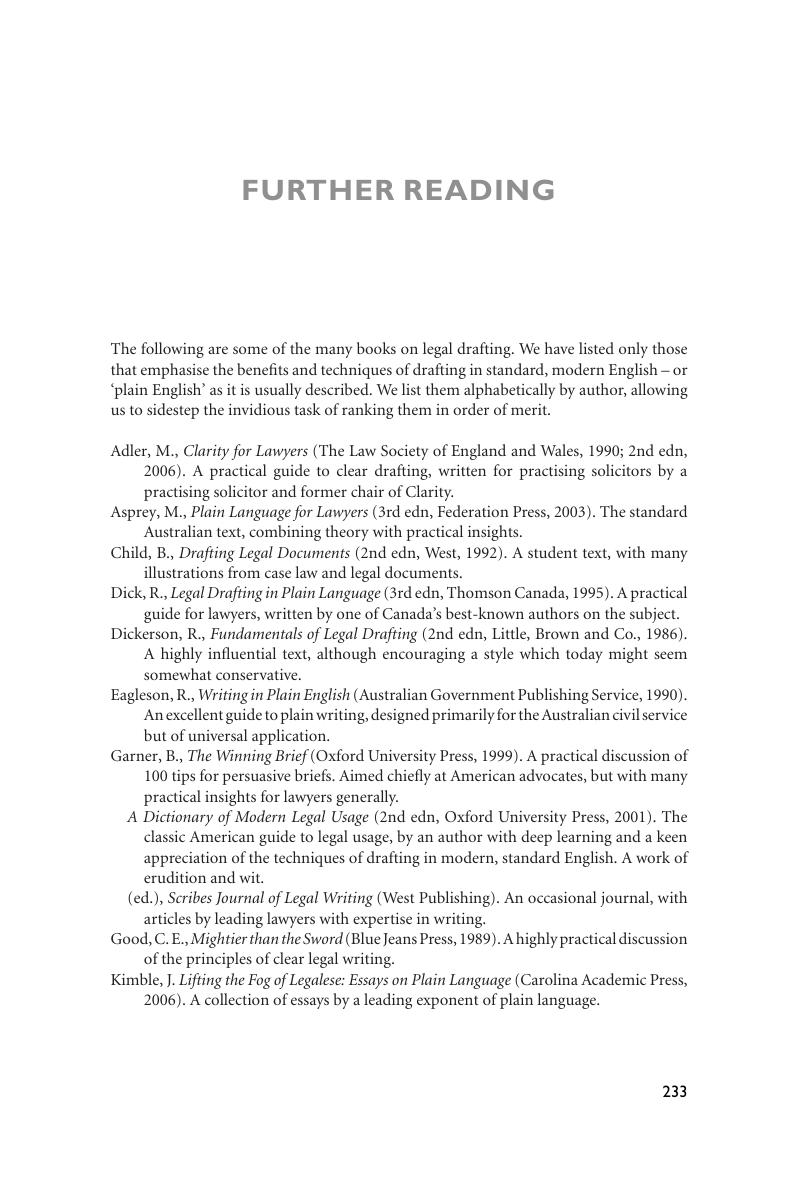Book contents
- Frontmatter
- Contents
- Acknowledgements
- Acknowledgements, second edition
- List of Panels and Tables
- Table of Statutes and Subsidiary Legislation
- Table of Cases
- Introduction
- 1 What Influences the Legal Drafter
- 2 How Legal Documents are Interpreted
- 3 The Move towards Modern English in Legal Drafting
- 4 Some Benefits of Drafting in Plain English
- 5 What to Avoid when Drafting Modern Documents
- 6 How to Draft Modern Documents
- 7 Using the Modern Style
- Further Reading
- Index
- References
Further Reading
- Frontmatter
- Contents
- Acknowledgements
- Acknowledgements, second edition
- List of Panels and Tables
- Table of Statutes and Subsidiary Legislation
- Table of Cases
- Introduction
- 1 What Influences the Legal Drafter
- 2 How Legal Documents are Interpreted
- 3 The Move towards Modern English in Legal Drafting
- 4 Some Benefits of Drafting in Plain English
- 5 What to Avoid when Drafting Modern Documents
- 6 How to Draft Modern Documents
- 7 Using the Modern Style
- Further Reading
- Index
- References
Summary

- Type
- Chapter
- Information
- Modern Legal DraftingA Guide to Using Clearer Language, pp. 233 - 234Publisher: Cambridge University PressPrint publication year: 2006



